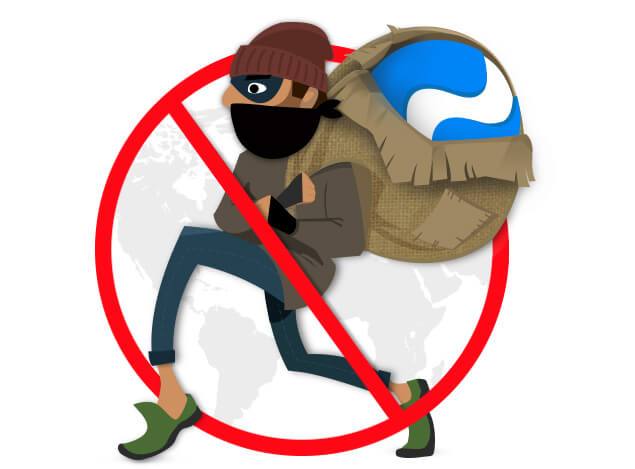
Recently our webxloo.com website was cloned. We discovered this act of piracy within a week and our reaction was prompt and instant. We performed different queries to find out the reasons for this action and understood that our response had to be urgent. This was the first step of a well-known black-hat SEO technique that forces Google to ban original websites and thus site-clones get all existing donor-site positions. We took all possible measures and in the end we got the cloned website suspended and removed from the Google results. Now we would like to share our steps, actions and results with you to help you prevent such acts of Internet crime in the future.
How Did We Detect a Website Clone?
We discovered the cloning through Google Analytics. As our website was fully copied our counters were copied as well. In the analytics we noticed that the visits were going to a different domain. We checked the statistics and found out that in ten days prior our website had been cloned to a local server. Then three days after that there had been a new domain registered so the site had appeared live.
What Were Our Steps to Remove a Cloned Website?
- First of all our developers closed the website to prevent further copying. They entered in htaccess a list of user agents against different programs which could copy websites.
- We checked where the copy domain was registered and what their hosting provider was. It turned out to be GoDaddy.com.
- We looked through the information about this hosting via the whois service, and found out the email address to submit any complaints was abuse@godaddy.com and so the email was sent.
- In response we received a detailed email with the information of where to file complaints on different issues such as copyright complaints, trademark complaints, phishing, suspicious domains, domain disputes, account changes, malware, spam, network abuse, content complaints, and child abuse. Our complaint referred to copyright abuse. The email we received contained the address to contact and the link to go to the proper form.
- We filled out the form as they promised to solve our problem as soon as possible through our form submission.
- Alongside the GoDaddy complaint we filed an application to Google support. Our email had the cloned website domain attached and proof that all our pages had been copied. Google then indicated that they needed all of the links one-by-one, one link per line.
- We sent another email to Google. This time we included every page link we had to avoid any misunderstandings with Google.
- Meanwhile GoDaddy took down the clone website. It got suspended.
- The last email from Google said that they didn’t find such site pages (of course, the host had deleted them), and that they wouldn’t make any changes as the algorithm was working correctly.

As this experience shows nowadays there are so many mischievous SEOs that steal the positions of good websites in the most popular search engine results to gain more organic traffic. To protect your website from cloning you can use additional security to prevent any cloning programs from having access, so they will be blocked. You can turn on the protection by opening your site in iframe or track access logins to it. You can use traps in the scripts as well. Nevertheless you can’t fully protect yourself as there will always be people who will find ways to bypass the protection.
Webxloo can provide you with all the necessary software, support and development services to enhance your website and business security.
Last updated on July 18th, 2023



 Phone Consultation
Phone Consultation
 Request a quote
Request a quote
 Text a Message
Text a Message